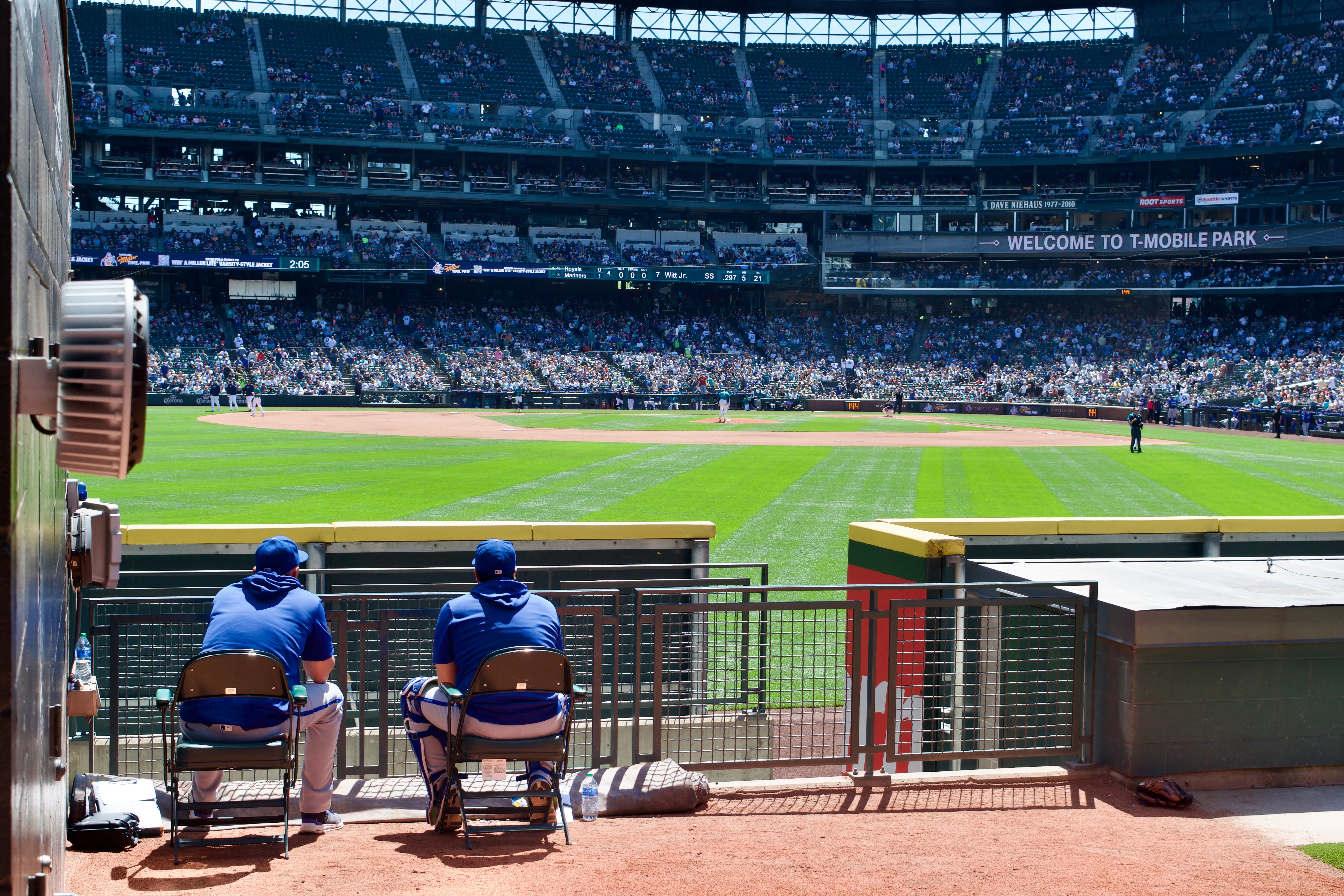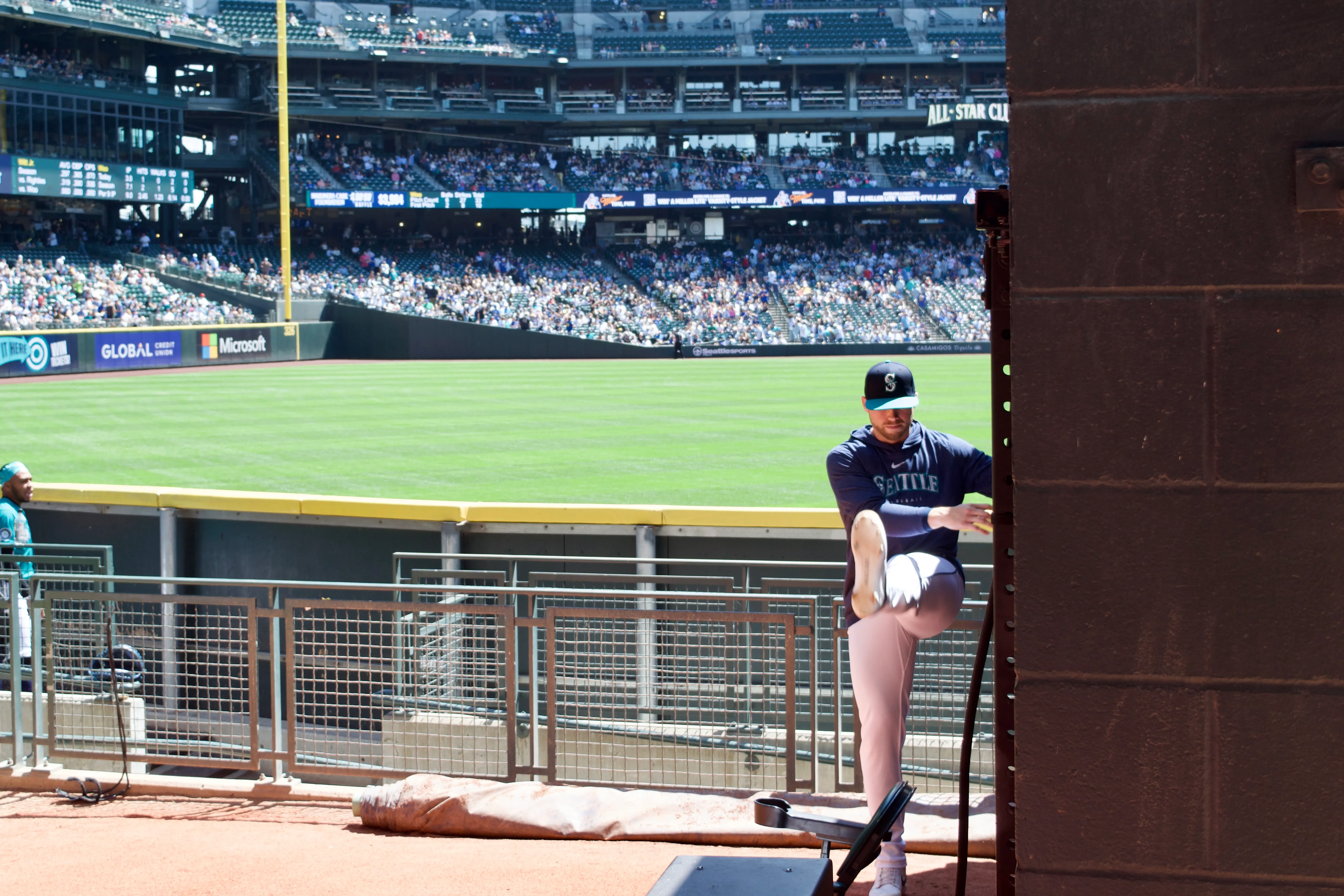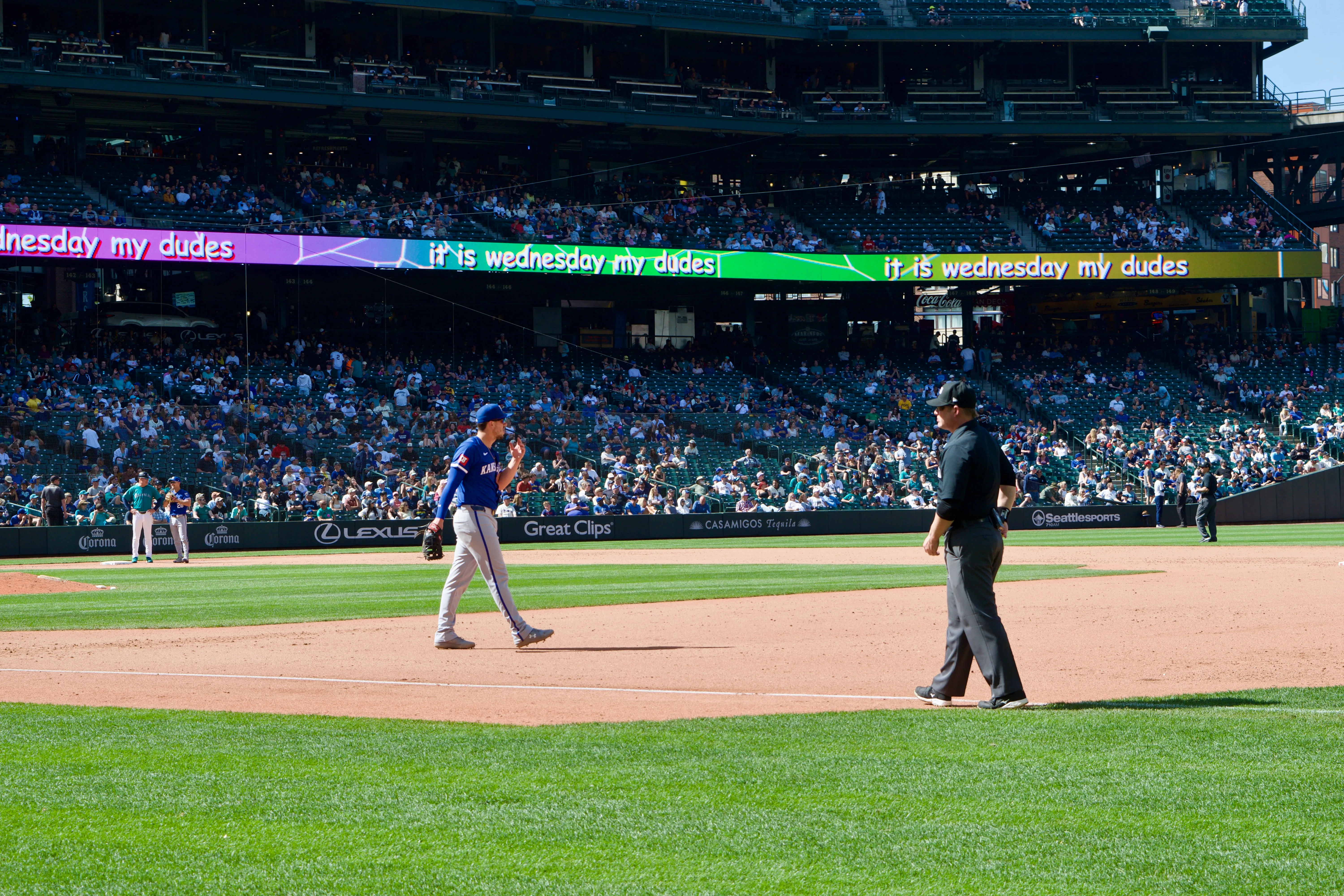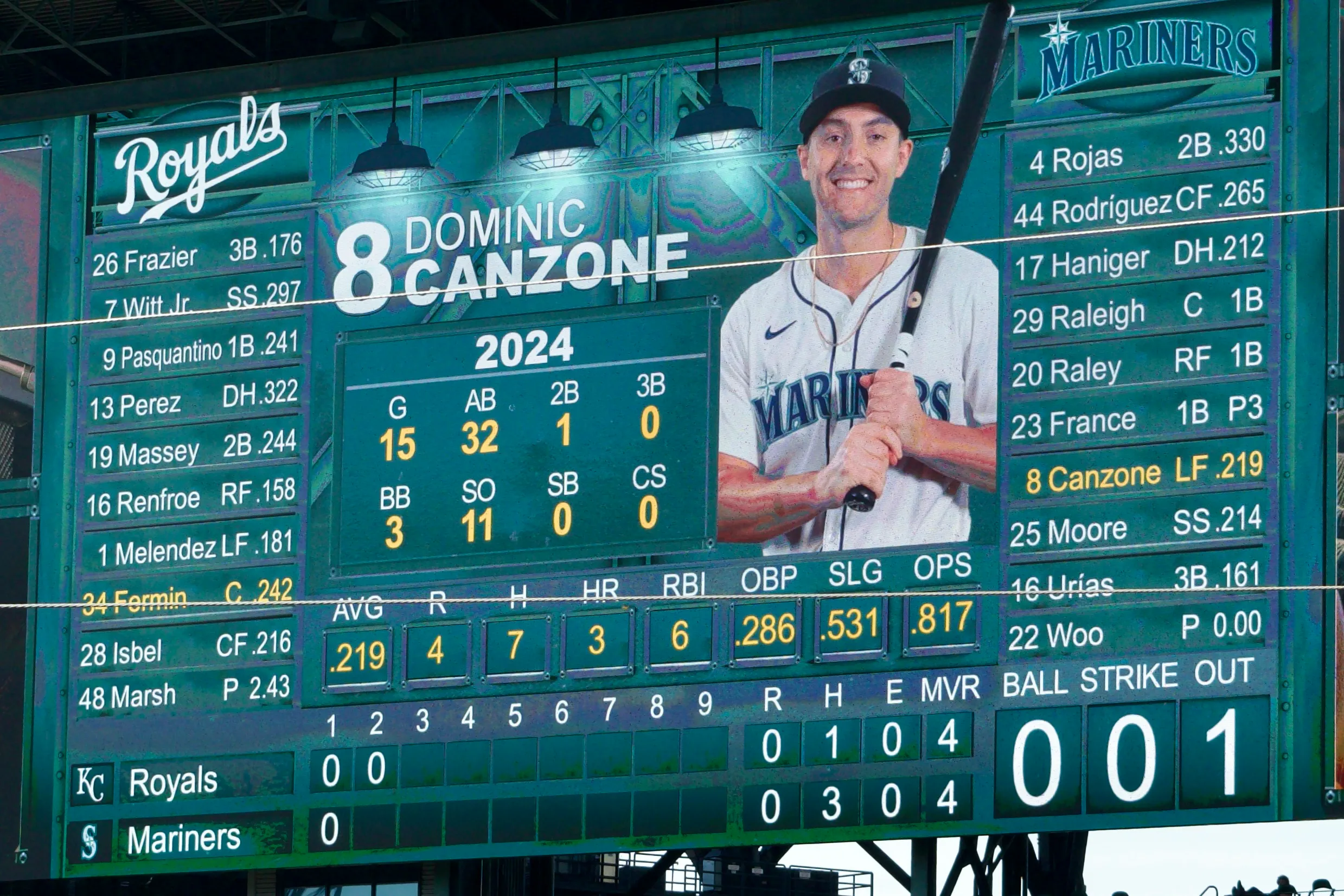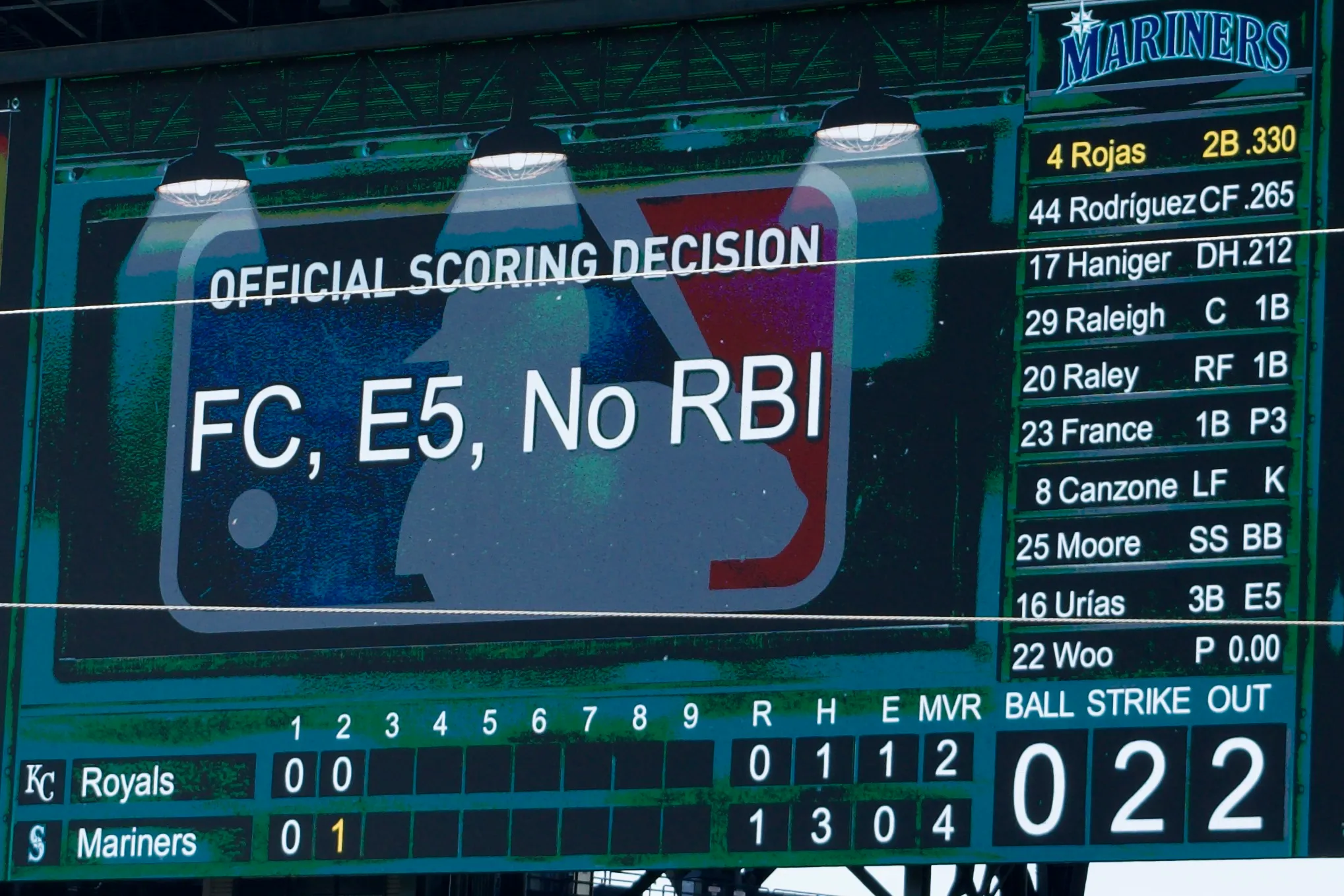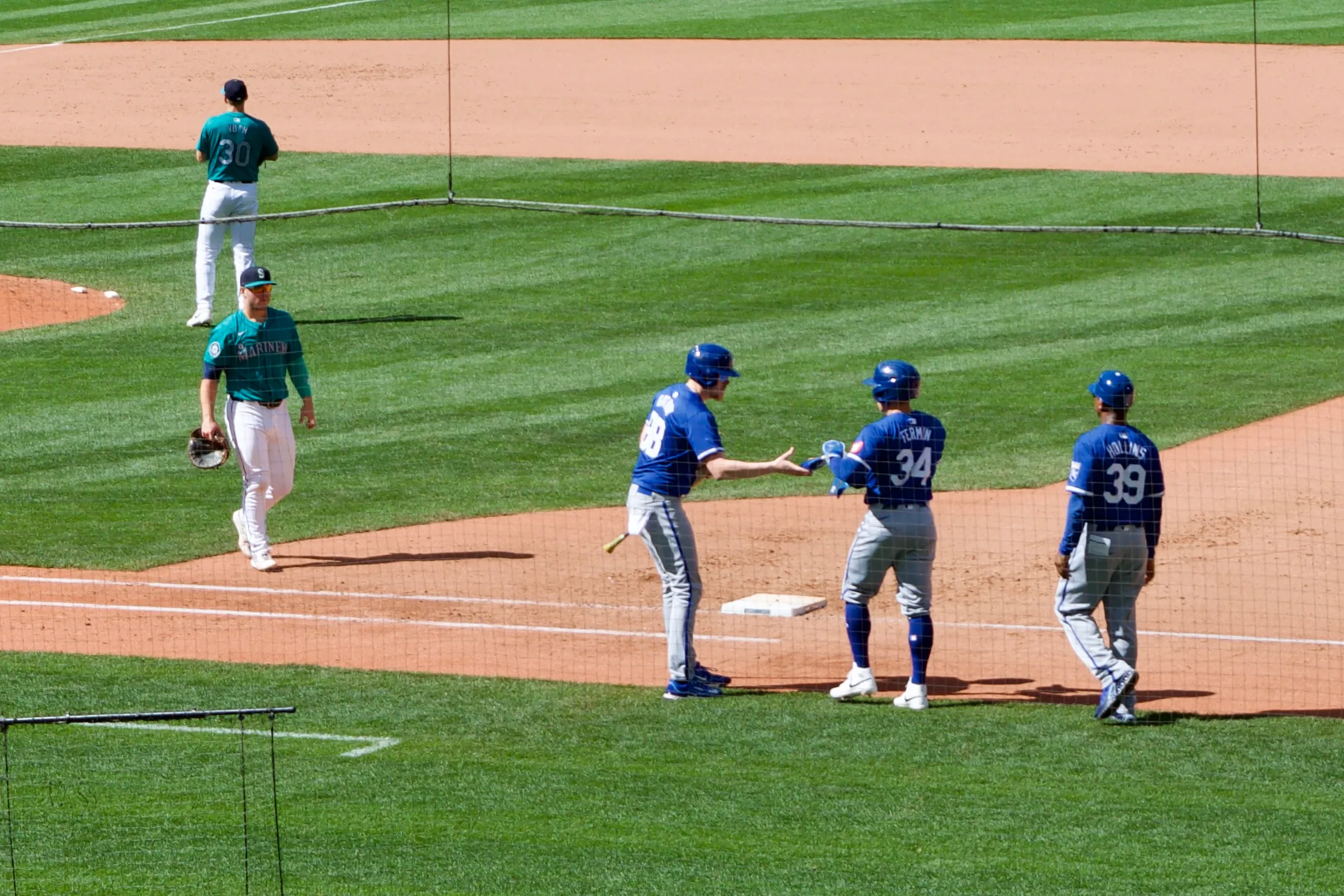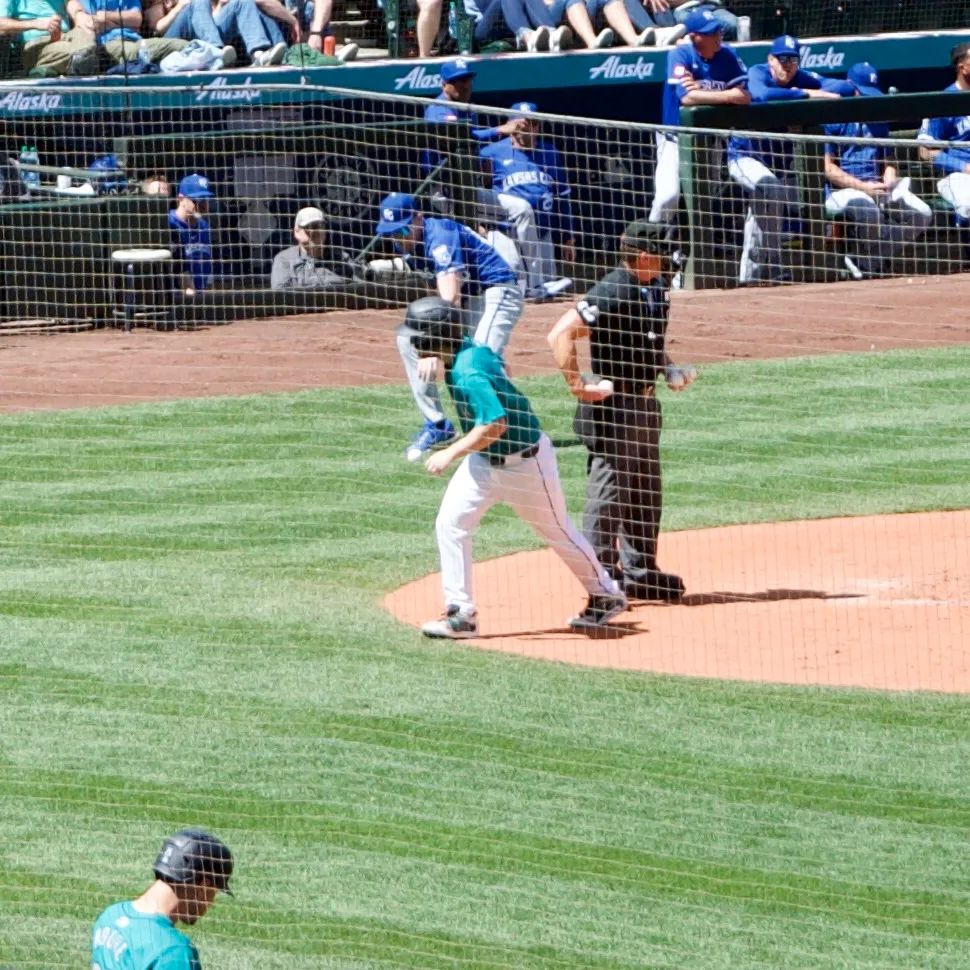I recently attended a Seattle Mariners game as part of a Microsoft event. It was my first time at a baseball game, so I recorded a bunch of observations about the experience.
The stadium experience
This was my first time attending any professional sport in person, so I didn’t have any idea what to expect. I checked the stadium rules in advance and found I could bring my camera, but not my camera bag or any of my larger lenses. Fortunately, my wide-angle lens and 20–55mm kit lens — both barely within the regulations — were enough to get some interesting photos.
A big part of the ballpark experience is being able to wander around the stadium; I spent at least half the game exploring rather than sitting in my assigned seat. There’s a lot to look at and do in the stadium, and as long as you’re not blocking anyone’s view during an at-bat, there’s remarkable freedom to walk around the aisles and see the field from different angles.
Baseball is complicated
Many of the Microsoft employees at the game — including myself — are more familiar with cricket than with baseball. Cricket has a reputation in North America for being hard to understand, but when I compare my beginner’s guide to cricket with our deliberations our section had to understand what was going on, I realized that baseball is much more complicated.
Can you decipher these scoreboards?
Answer key (bottom section)
Balls, strikes, and outs are fundamental to the game, relatively easy to explain to a newcomer, and mercifully unabbreviated on the bottom right of the scoreboard.
Each team’s current score is the total number of runs under the “R” column; columns 1–9 show how many runs were scored in each inning. The “H” column counts the number of hits resulting on a runner on base due to the batting team’s efforts; the “E” column counts the number of errors by the fielding team that allowed their opponent to get a runner on base.
I had no idea what the acronym “MVR” stood for until a colleague expanded it to “mound visits remaining”; this refers to a kind of time out the fielding team can take to discuss strategy or switch pitchers.
Answer key (side sections)
The sides of the scoreboard display the current lineup of each team with jersey numbers and positions; the highlighted name tells you whose turn it is to bat. The batting lineup shows one other piece of information for each player:
- For players that have not yet batted in the inning, it shows the batting average.
- For players that have batted already in the inning, it shows a cryptic acronym that tells you the result of their at-bat.
- For pitchers (who do not bat), I think it shows the pitcher’s earned runs average (ERA) which is its own whole thing.
On the right-hand side of the first scoreboard, we see that the name highlighted in yellow is the current batter, Seattle’s Dominic Canzone, who wears number 8 on his jersey, plays left field, and has a batting average of .219.
The three Seattle players above Canzone have already batted this inning. Center fielder Raleigh had a single (recorded as “1B”), as did right fielder Raley. First baseman France is listed as having a “P3” which is apparently the acronym for “out after hitting a pop fly which was caught by the first baseman.”
Answer key (middle section, first scoreboard)
The middle of the first scoreboard shows the statistics of the current batter. I had to look up most of the stats on Wikipedia:
| Abbr | Value | Stat | Meaning |
|---|---|---|---|
| G | 15 | Games | Number of games the batter has played in this year. |
| AB | 32 | At-bats | Number of opportunities the batter had to bat, more or less, except that walks and some other outcomes don’t count towards this statistic. |
| 2B | 1 | Doubles | Number of hits on which the batter was able to safely reach second base. |
| 3B | 0 | Triples | Number of hits on which the batter was able to safely reach third base. |
| BB | 3 | Bases on balls | Number of times the batter was awarded first base after four called balls. (Better known as “walks”.) |
| SO | 11 | Strikeouts | Number of times the batter was called out after three strikes. |
| SB | 0 | Stolen bases | Number of times the player was able to steal a base. There are a bunch of rules about when a runner can steal a base and when something is scored under this statistic. |
| CS | 0 | Caught stealing | Number of times the player was tagged out while attempting to steal a base. |
| AVG | .219 | Batting average | Percentage of at-bats where the batter hit the ball and safely reached a base. |
| R | 4 | Runs | Number of times the batter scored a run by crossing home plate. |
| H | 7 | Hits | Number of times the batter hit the ball and safely reached a base. |
| HR | 3 | Home runs | Number of hits on which the batter was able to safely touch all three bases and cross home plate. (Usually by hitting the ball into the crowd.) |
| RBI | 6 | Runs batted in | Number of times the batter’s action allowed another player to score a run. |
| OBP | .286 | On-base percentage | Percentage of the time the batter gets on base, including being awarded first base for a walk or being hit by a pitch. |
| SLG | .531 | Slugging percentage | Average number of bases achieved per at-bat. |
| OPS | .817 | On-base plus slugging | OBP plus SLG, for some reason. |
Answer key (scoring decision, second scoreboard)
Now we just need to figure out what “FC, E5, No RBI” is supposed to mean. This was displayed on the jumbotron after the following play:
“FC” stands for “fielder’s choice”, meaning that the third baseman chose to try to get the out at third instead of throwing it to first. This means the hit doesn’t count towards the batter’s statistics. The “E5” means the scorer decided that the Seattle players were safe because of the third baseman’s error.
Finally, the run that scored during the play does not count as an RBI for the batter because if it weren’t for the error, there would have been three outs and the runner wouldn’t have scored.
Seriously, baseball is complicated.1
Spot the camera
Before I came to the game I watched a video about camera assignments at professional baseball games and I had fun finding the camera operators at high first, low first, and center field.

The camera operators at center field are responsible for filming each pitch.
I was walking around the concourse when the Mariners’ Ty France hit a home run. While the crowed erupted in cheers, I was excited for a different reason — I was in the perfect position to watch the cable-suspended camera move into position behind third base and film the runner crossing home plate!
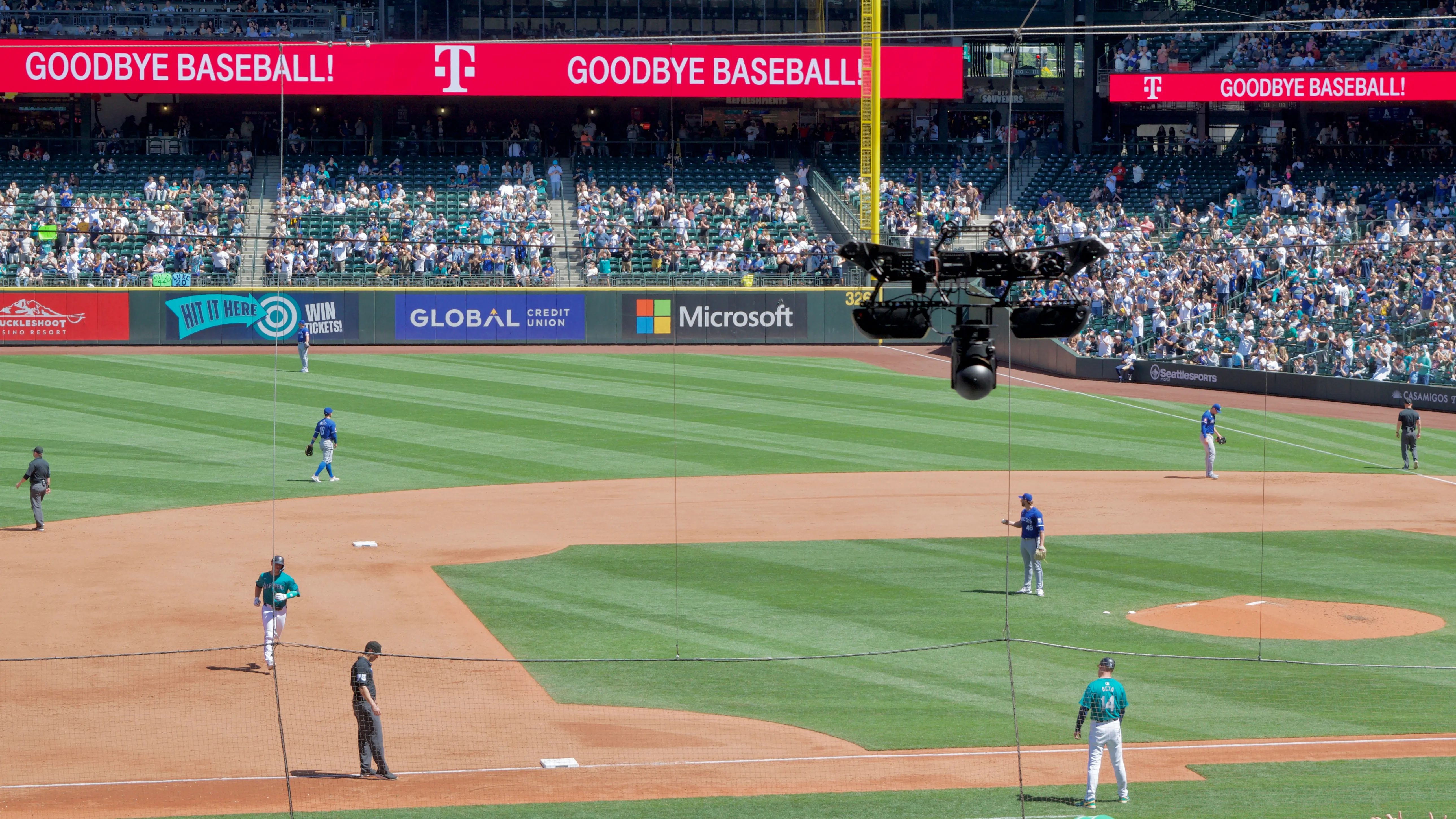
The cable operated camera follows the batter along the third base line after a home run.
Random people keep the ball rolling
To me, no sport is as compelling as all the logistics and anonymous work that goes on behind the scenes. For example, T-Mobile Park still has an analog scoreboard in addition to all the digital ones, which means someone has to be in charge of updating it.
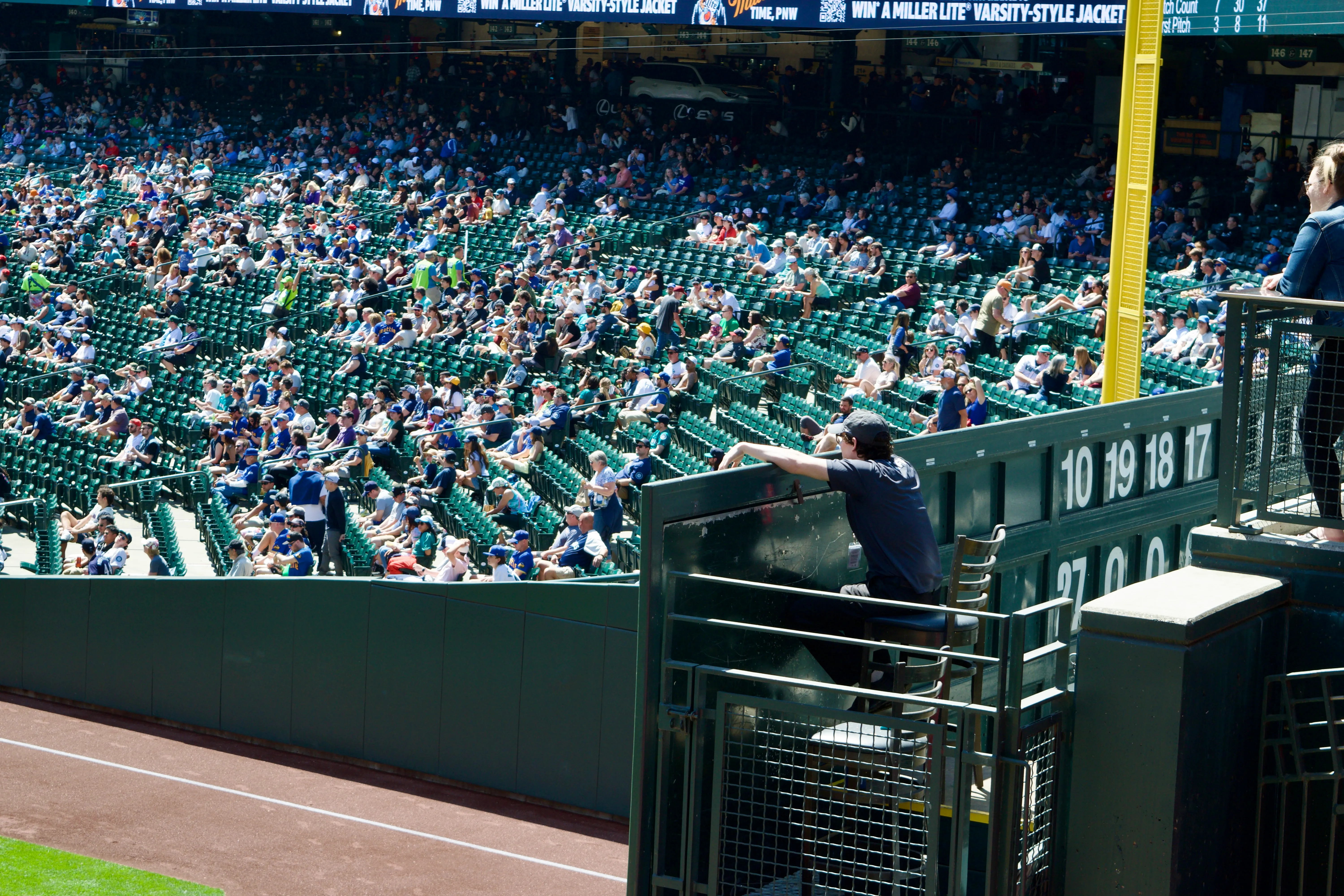
Every time a player gets on base, their team’s batboy runs out to pick up their discarded bat and help switch their gloves. The home team’s batboy is also responsible for refilling the umpire’s stock of extra balls, which happens a lot — MLB teams go through about a hundred balls in a game!
The most exciting piece of logistics came between innings, when an army of men with rakes came out to smooth the base paths.
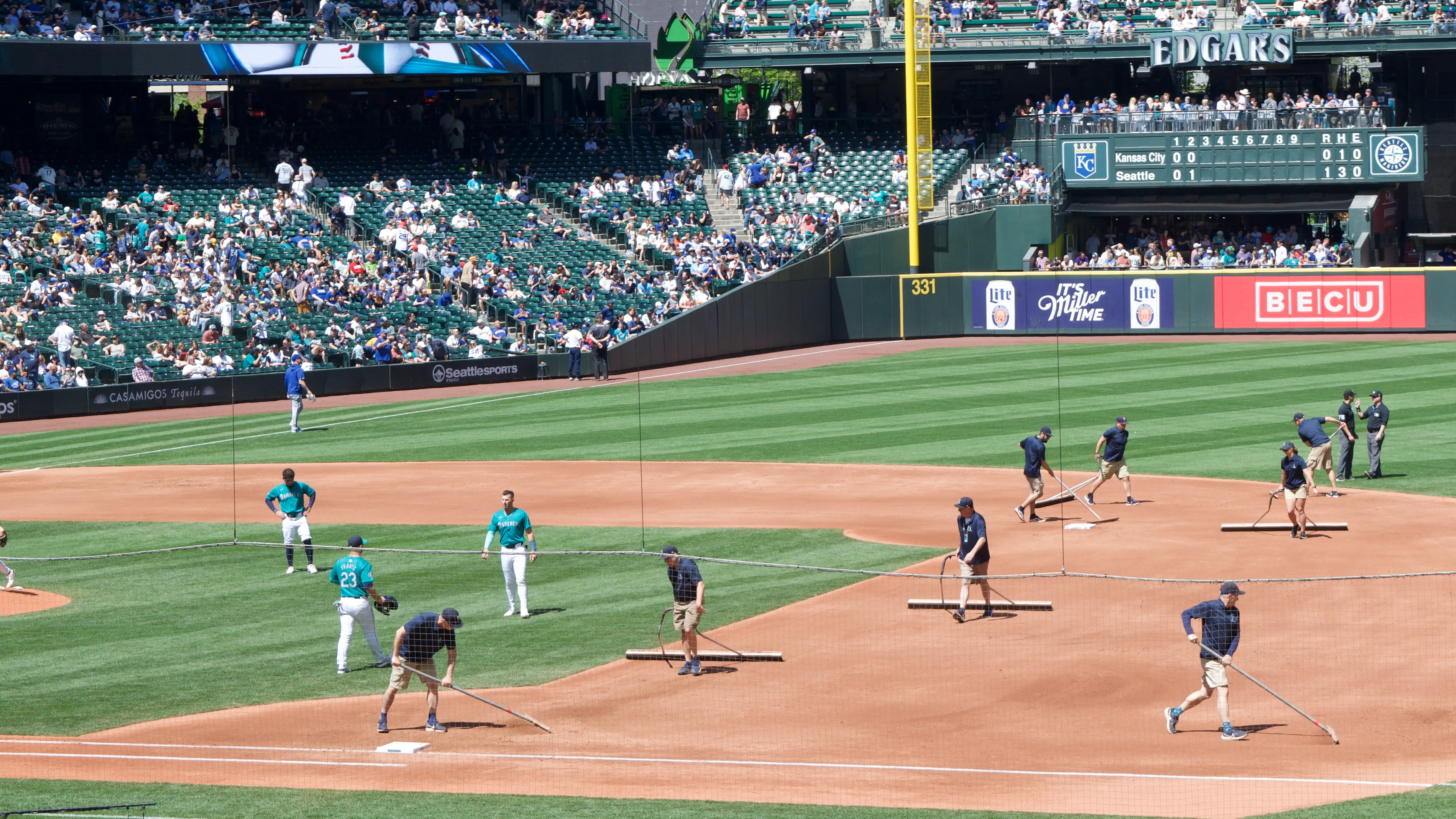
Take me out to the ball game?
I’m never going to be a person who regularly attends live sports: it’s too crowded, too noisy, and I don’t care enough about the action happening on the field. But I’m really glad to have gone once. It was a lot of fun to explore the stadium and see a few glimpses of what goes in to putting on a baseball game. Thanks Microsoft for bringing me to a fun event!
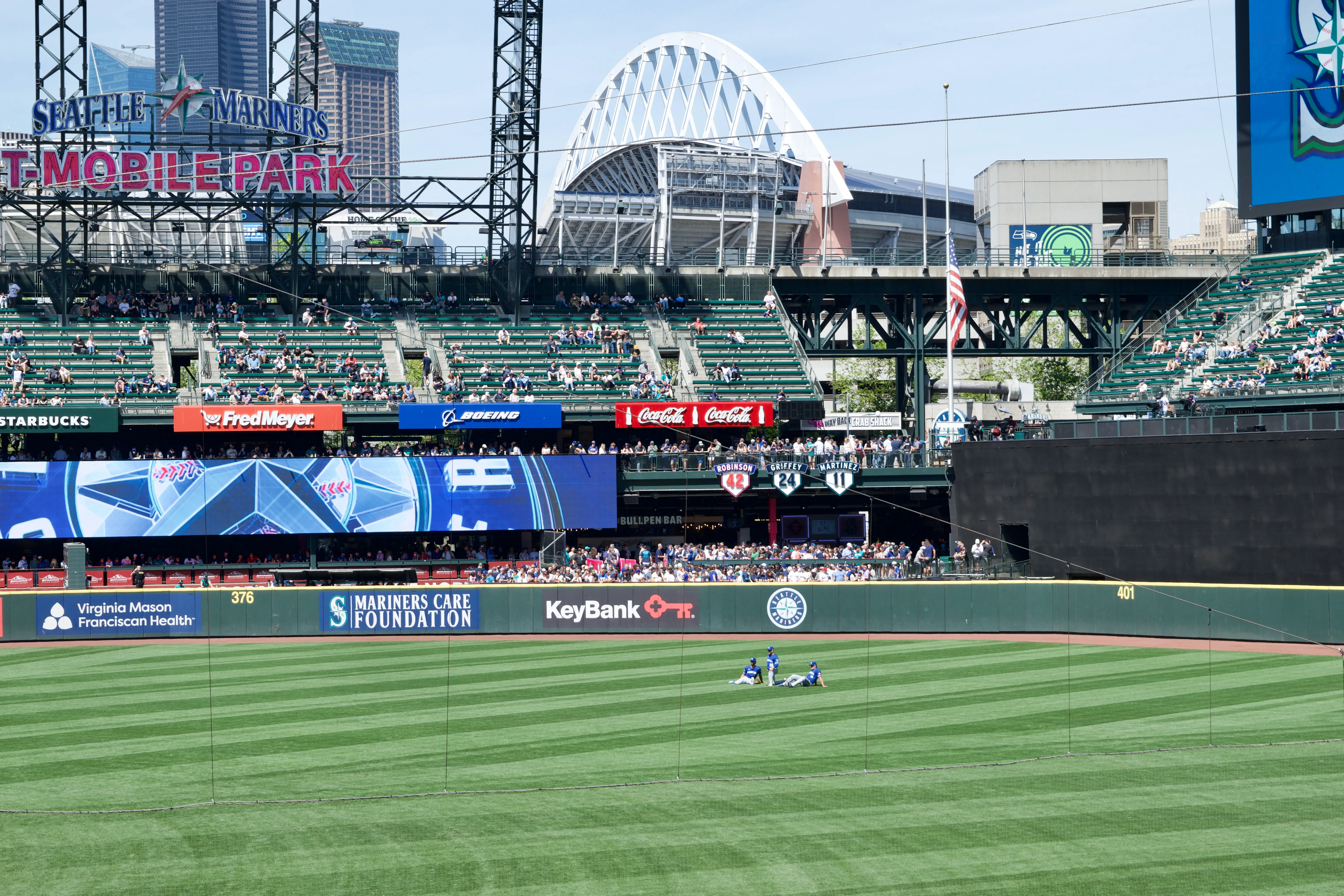
-
Even the basic concept of balls and strikes is not straightforward to explain. “A strike is when the ball passes over the plate between the batter’s knees and shoulders and the batter doesn’t hit it; or when the batter swings and misses, regardless of where the ball is; or when the batter hits the ball behind the foul lines, except a foul ball doesn’t count for strike three.”

